Hi everyone, for those who already follow me, you know that I work with children. I was with 2 year olds and now I'm 5 years old. I can now do a little more difficult work 😀😀😀
Today we gave the water cycle
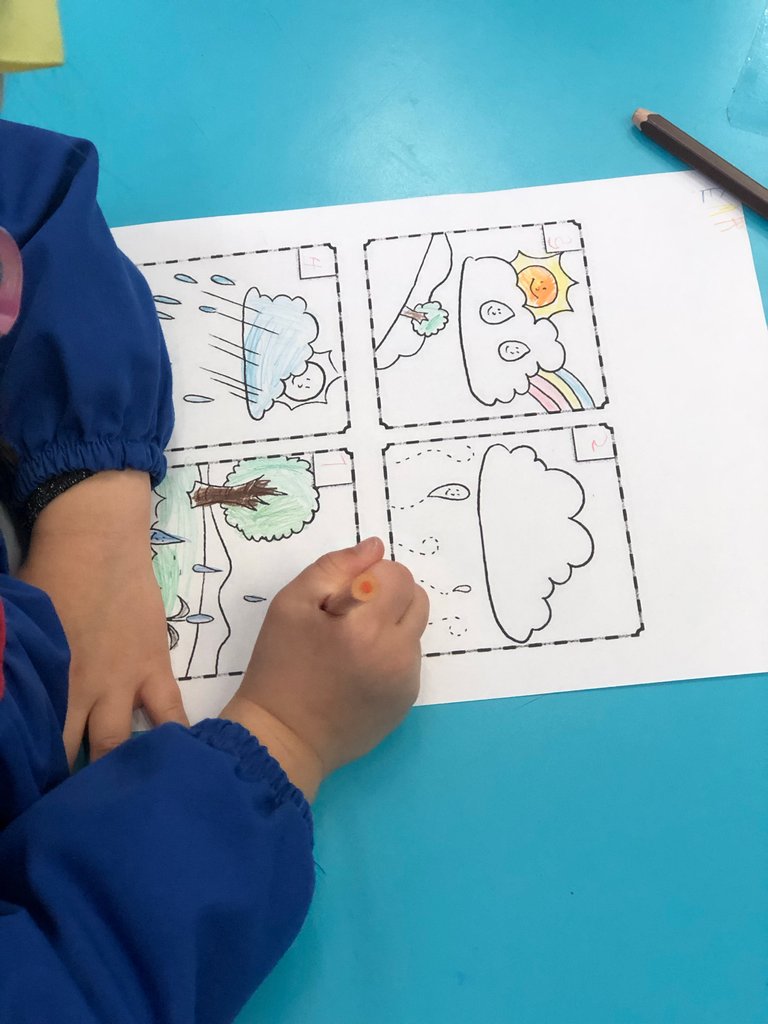
In this activity we had to number, then we stitch, then we cut and re-glue on a sheet in order
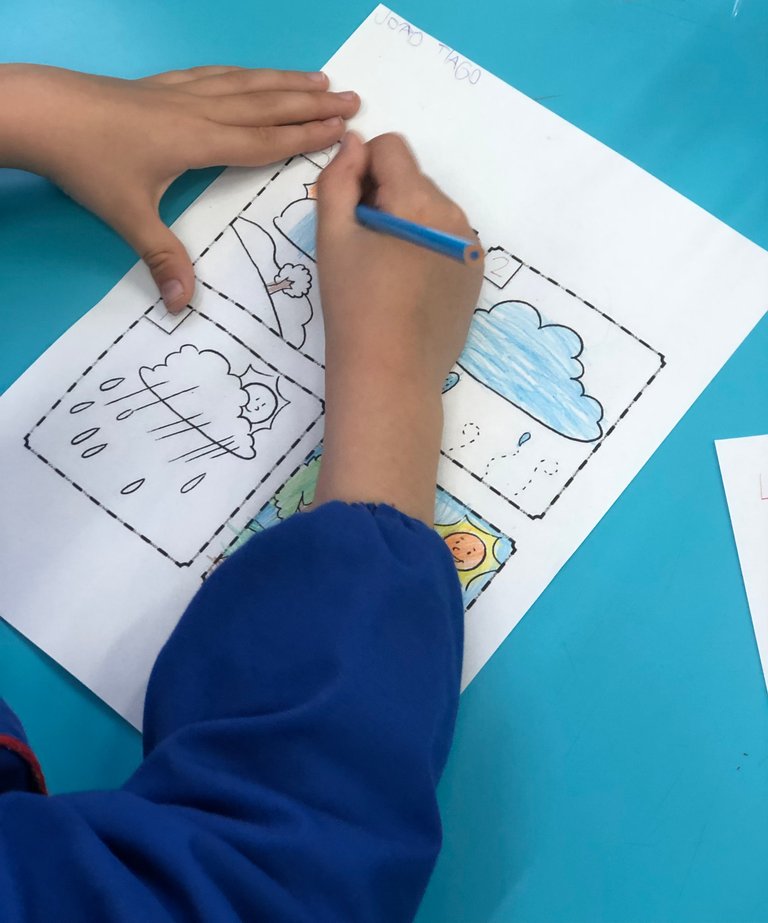
Water is an essential element for the existence of life on Earth. 75% of the earth's surface is covered by water, but only 3.5% of this amount corresponds to fresh water. 69% of this fresh water is in the form of ice, while the remaining 31% is in a liquid state in rivers and underground aquifers. In addition, we can find water circulating through the atmosphere in a gaseous state.
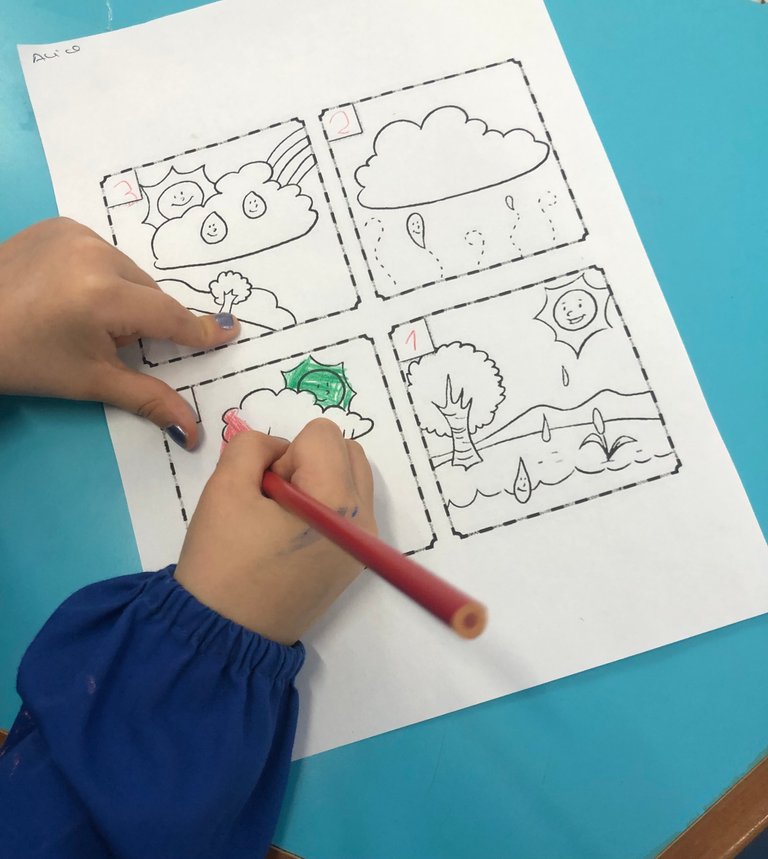
What is the water cycle?
Water is a molecule made up of two H atoms (hydrogen) and one O atom (oxygen). It is tasteless, colorless and odorless. Furthermore, the water element can be seen in three states: liquid (the water we drink), solid (the ice cubes that cool us in the summer), or gas (water vapor that travels into the atmosphere).
This movement of water through its three states is what is known as the water cycle. The engine responsible for this movement is the Sun, which evaporates liquid water from seas and lakes into the atmosphere. Once in the atmosphere, with the help of gravity, wind and temperature changes, water returns to the Earth's surface in the form of rain, snow or hail.
People and living beings also contribute to this cycle, consuming water for metabolic and physiological processes and expelling it later.
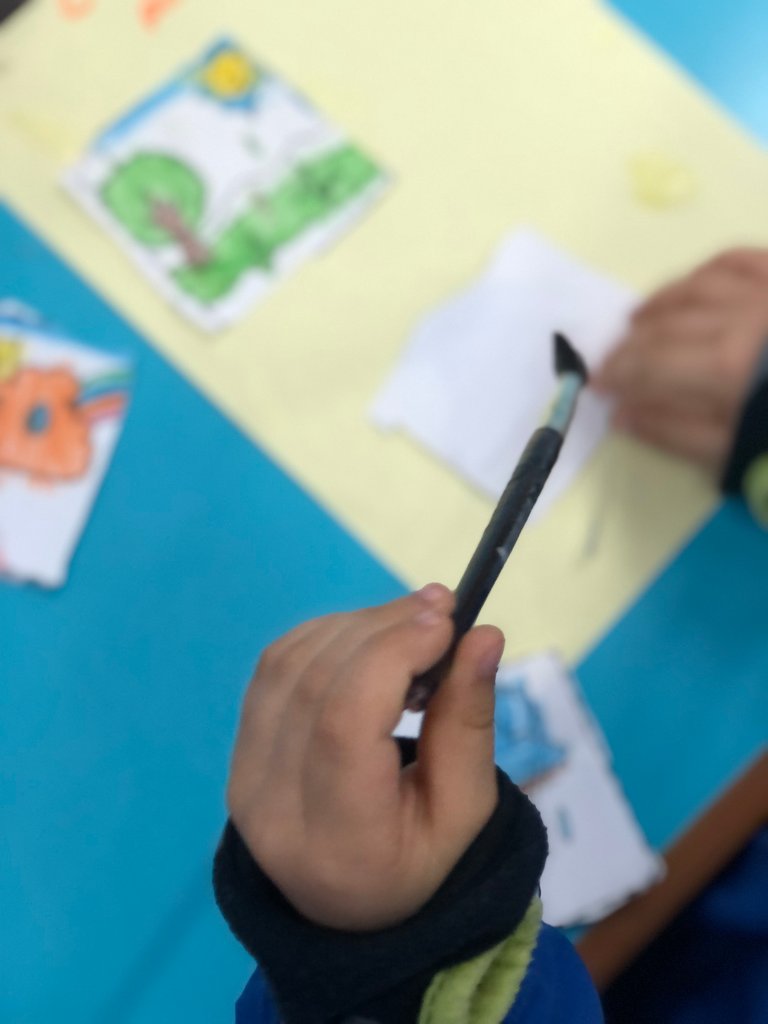
Explaining the water cycle to children
The hydrosphere is the set of all the water on Earth. In addition to all the liquid water in the seas, oceans and rivers, there are also the glaciers that cover part of the continental surface and the layers of ice that float in the oceans. Liquid water in seas, lakes or rivers evaporates due to the heat produced by the Sun. And the evaporated water particles rise and condense in the atmosphere. There, the water vapor cools and condenses into small drops of water, forming clouds.
Thanks to the wind, the clouds will be carried to colder areas, where the precipitation of this water will occur in the form of rain, snow or hail. This is how water is returned to the earth. This water that falls through the mountains will originate the rivers or, if it infiltrates, it will be part of the groundwater.
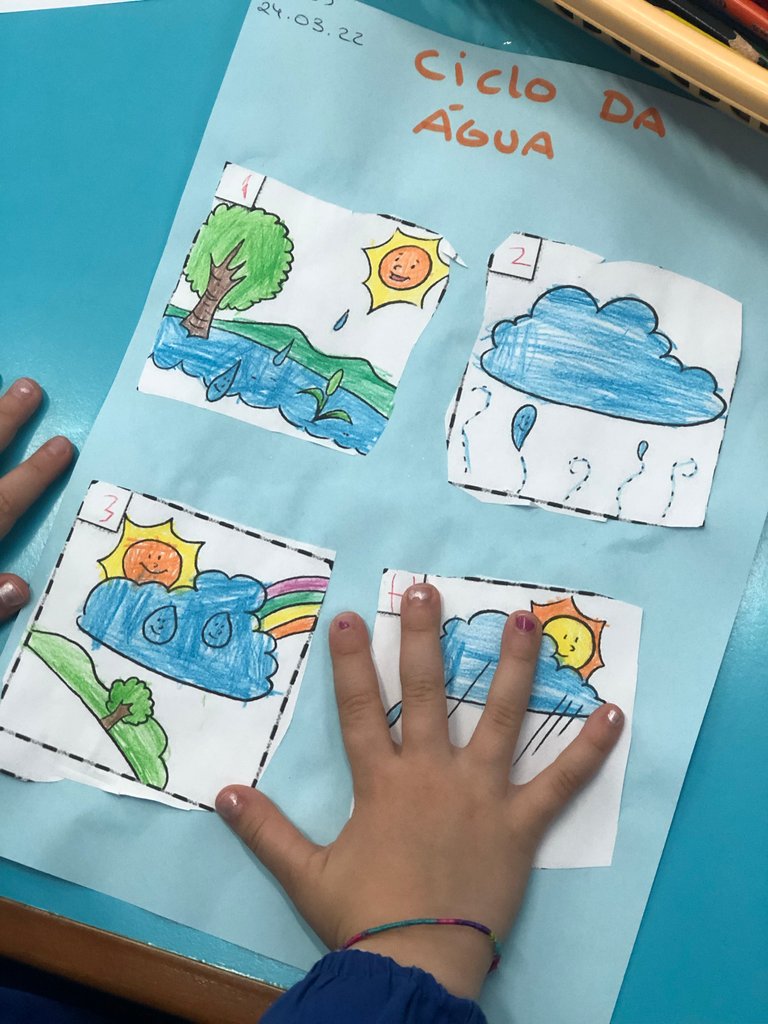
I hope you like it, see you soon friends 😀😀😀
Thanks for giving us an insight about the water cycle :)
you are welcome 😀